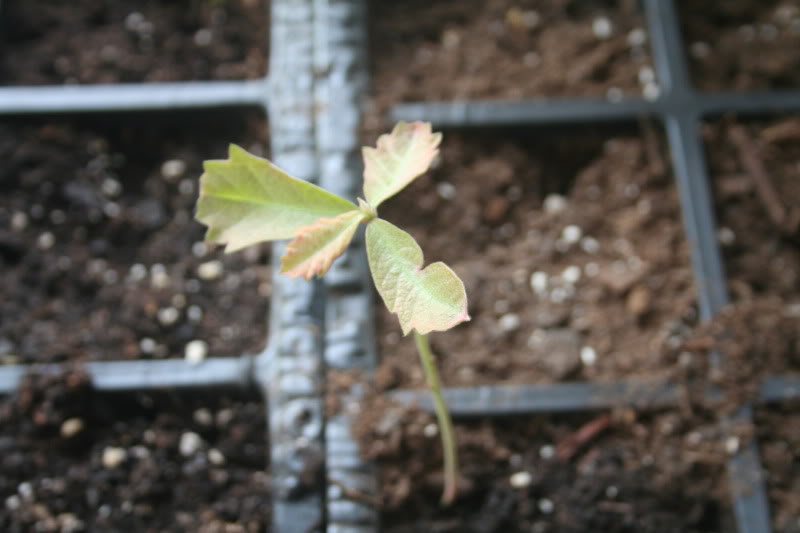From the Iowa DNR:
Iowa Bur Oaks Face Terminal Fungus
DES MOINES - One of Iowa's most identifiable trees is under attack from a newly named disease that is currently causing more problems in the state than the high profile emerald ash borer or gypsy moth.
Bur oak blight has been in Iowa since the early 2000s and is already killing trees. Symptoms of bur oak blight include a v-shaped brown discoloration of leaves and browning veins in July and August. This disease can cause severe defoliation that can lead to morality of branches or entire trees. Trees die after the fourth of fifth year of defoliation, usually from a secondary pest.
"Early detection of the disease is the key to managing it," said Tivon Feeley, with the Iowa Department of Natural Resources forest health program.
Infected bur oaks tend to not drop the leaves in the fall like a healthy tree would. These infected leaves act as a source of inoculums for the healthy leaves that emerge and grow in the spring. The emerging leaves become infected with bur oak blight and the symptoms progress slowly until the leaves start browning in late summer.
Bur oak is native to all 99 Iowa counties and more than half of the counties have bur oak blight. The disease is killing oaks from southwest Wisconsin to southern Minnesota, most of Iowa and to eastern Nebraska.
In 2008, bur oak ranked second among all tree species in volume of saw timber on forest land and provides substantial value for wood products. It is one of the most beneficial trees for wildlife habitat and provides food through its acorns for many game and non-game species. It is a significant part of the largest forest type in Iowa. Wild turkey and deer depend on forests for cover and search out oaks for mast before winter.
The loss of bur oak within the oak-hickory forest type will negatively impact the $1.5 billion contribution that fish and wildlife recreation provides to Iowa's economy. Additionally, Iowa's 3 million acres of forest support an estimated 1.1 billion board feet of merchantable size bur oak, with an economic value to landowners of $330 million.
"Right now we are recommending that woodland owners do salvage cuts of infected trees to get maximum value of the tree before it dies, because we will not get rid of this," Feeley said. "Bur oak blight is here to stay."
While the outlook for bur oaks in the countryside is bleak, the outlook for those in town is slightly better.
In urban areas, injecting the fungicide, Alamo™, into the tree appears to have helped trees with their ability to recover. Trees appeared symptomless for the first two seasons after being injected. However, it is likely that subsequent injections would be required when bur oak blight starts to defoliate the tree again.
"It's important for tree owners to not re-apply the treatment until the tree starts to defoliate from the pathogen," Feeley said.
Iowa's overall urban tree canopy has 12 percent tree cover, of which, 3 percent of the trees are bur oak. The estimated landscape value and removal cost for urban trees is more than $500 million. Homeowners can have leaves tested for the disease by sending samples to Iowa State University's Plant and Insect Diagnostic Clinic to have the fungus confirmed. Information on the click and how to submit samples is online at
http://www.plantpath.iastate.edu/pdc/.
Proper woodland and community tree management have a critical role in creating healthy trees. Maintaining a diversity of trees is the best insurance a landowner can have. Communities can create tree diversity by not having more than 10 percent of any one species represented.













